Abstract
1. The effects of the sulphonylurea, glibenclamide (20 mg kg-1, i.v.), at a dose that blocks vascular potassium channels, on systemic and splanchnic haemodynamics (radioactive microspheres) were studied in conscious rats. 2. Glibenclamide significantly decreased cardiac index and hepatic artery blood flow while it significantly increased vascular resistance in systemic, portal and hepatic arterial territories. 3. In rats with suppressed cardiovascular reflexes, glibenclamide induced vasoconstriction in systemic, portal and hepatic arterial territories. 4. Intracerebroventricular administration of glibenclamide did not alter systemic or regional vascular tone. 5. Glibenclamide blunted the vasodilator effect of the potassium channel opener, diazoxide but not that of the L-type calcium channel blocker, nicardipine. 6. Another sulphonylurea, glipizide (20 mg kg-1, i.v.), induced significant systemic and splanchnic vasoconstriction. 7. Thus, the glibenclamide-induced blockade of vascular potassium channels caused a vasoconstriction in the systemic and splanchnic vascular beds. In these territories, therefore, the opening of glibenclamide-sensitive potassium channels might be responsible for a basal vasodilator tone.
Full text
PDF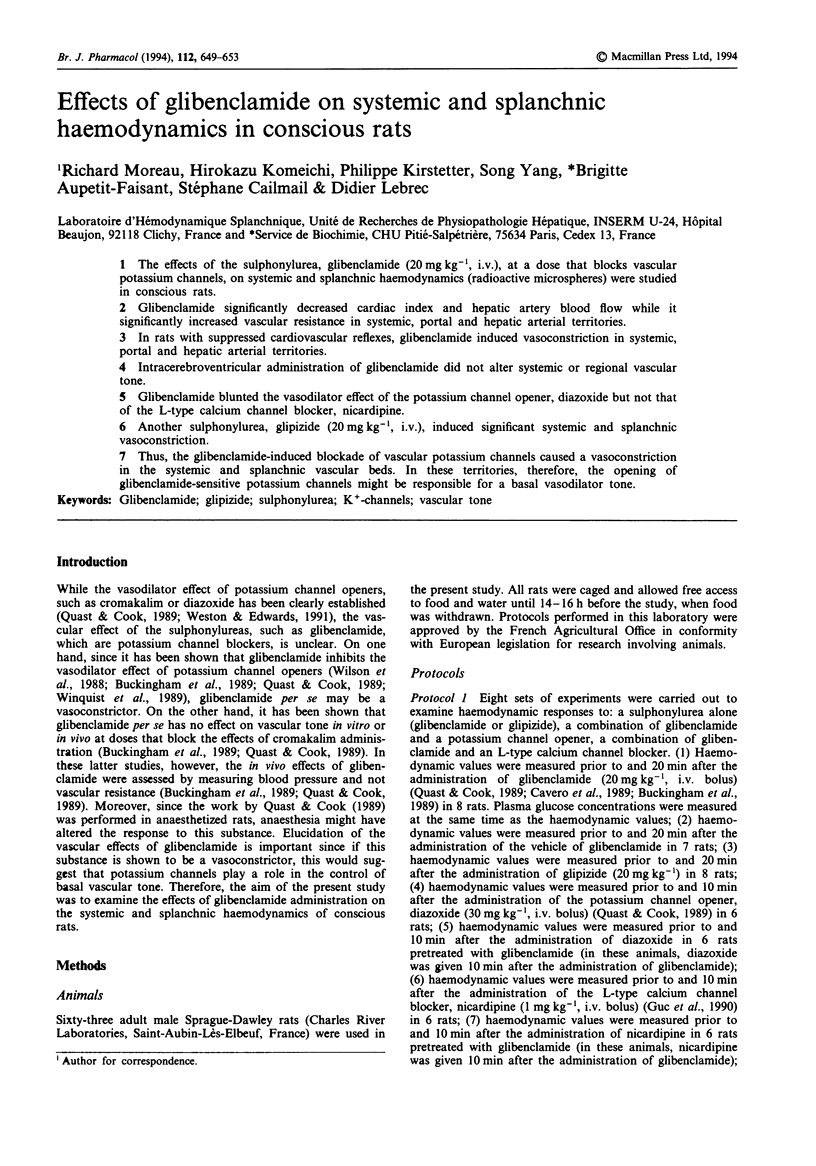
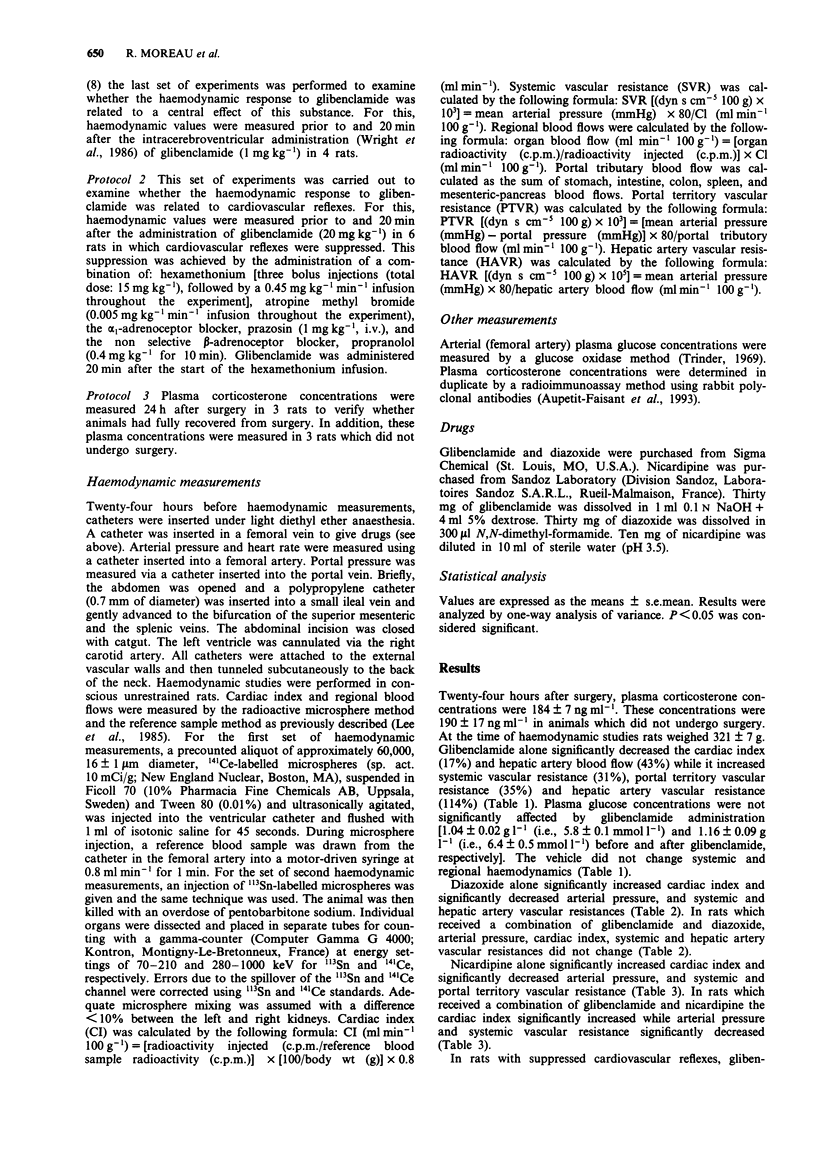
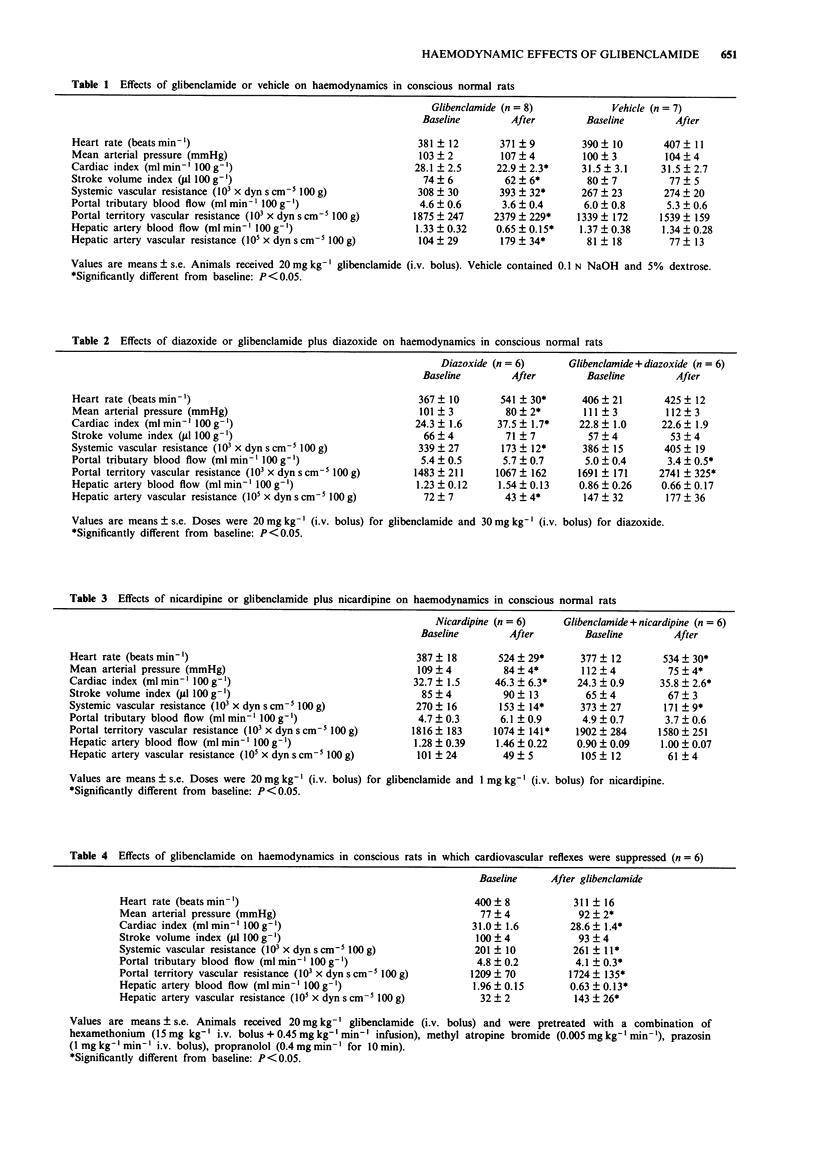
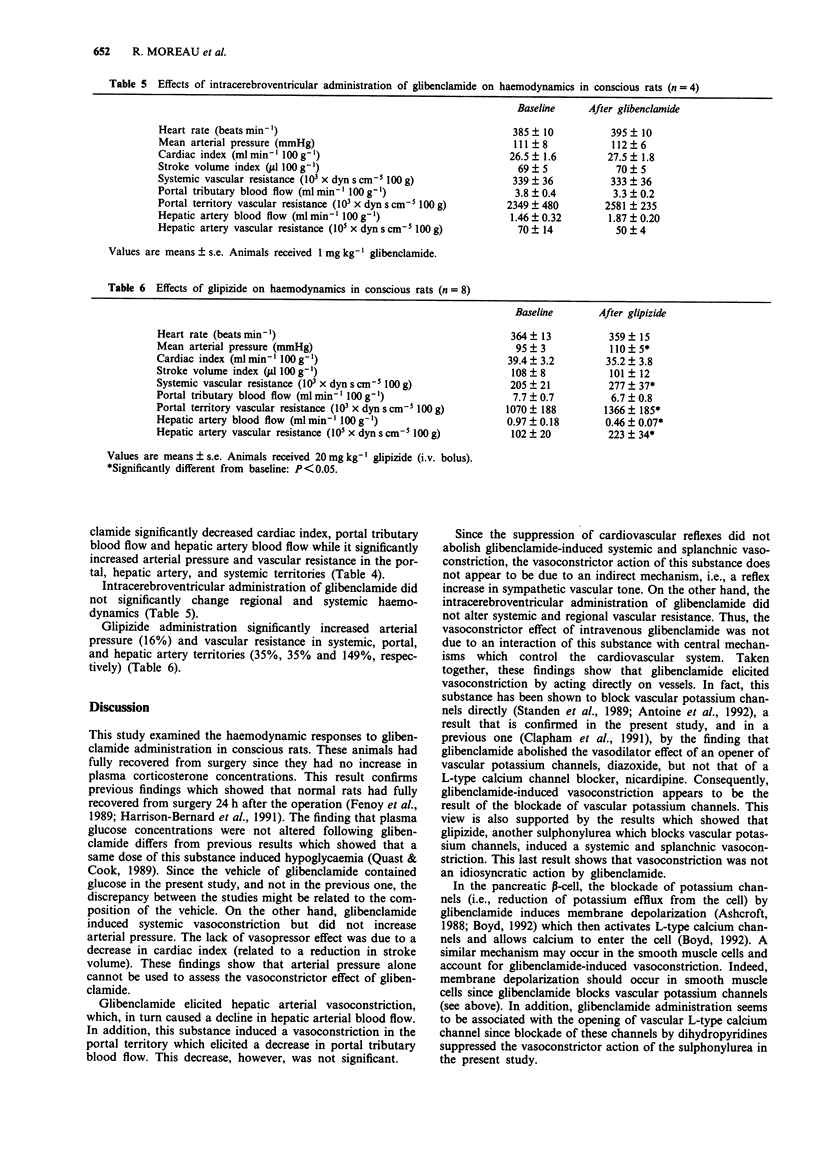
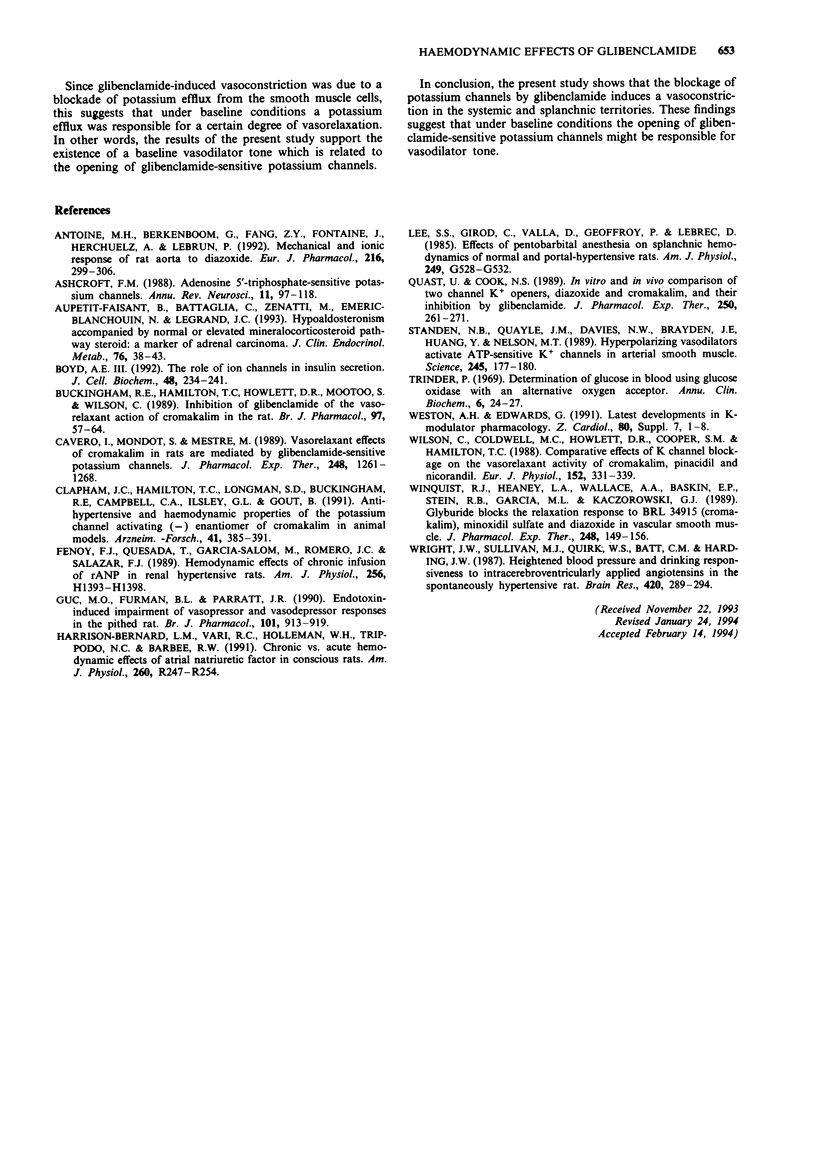
Selected References
These references are in PubMed. This may not be the complete list of references from this article.
- Antoine M. H., Berkenboom G., Fang Z. Y., Fontaine J., Herchuelz A., Lebrun P. Mechanical and ionic response of rat aorta to diazoxide. Eur J Pharmacol. 1992 Jun 5;216(2):299–306. doi: 10.1016/0014-2999(92)90374-d. [DOI] [PubMed] [Google Scholar]
- Ashcroft F. M. Adenosine 5'-triphosphate-sensitive potassium channels. Annu Rev Neurosci. 1988;11:97–118. doi: 10.1146/annurev.ne.11.030188.000525. [DOI] [PubMed] [Google Scholar]
- Aupetit-Faisant B., Battaglia C., Zenatti M., Emeric-Blanchouin N., Legrand J. C. Hypoaldosteronism accompanied by normal or elevated mineralocorticosteroid pathway steroid: a marker of adrenal carcinoma. J Clin Endocrinol Metab. 1993 Jan;76(1):38–43. doi: 10.1210/jcem.76.1.8421100. [DOI] [PubMed] [Google Scholar]
- Boyd A. E., 3rd The role of ion channels in insulin secretion. J Cell Biochem. 1992 Mar;48(3):235–241. doi: 10.1002/jcb.240480303. [DOI] [PubMed] [Google Scholar]
- Buckingham R. E., Hamilton T. C., Howlett D. R., Mootoo S., Wilson C. Inhibition by glibenclamide of the vasorelaxant action of cromakalim in the rat. Br J Pharmacol. 1989 May;97(1):57–64. doi: 10.1111/j.1476-5381.1989.tb11923.x. [DOI] [PMC free article] [PubMed] [Google Scholar]
- Cavero I., Mondot S., Mestre M. Vasorelaxant effects of cromakalim in rats are mediated by glibenclamide-sensitive potassium channels. J Pharmacol Exp Ther. 1989 Mar;248(3):1261–1268. [PubMed] [Google Scholar]
- Clapham J. C., Hamilton T. C., Longman S. D., Buckingham R. E., Campbell C. A., Ilsley G. L., Gout B. Antihypertensive and haemodynamic properties of the potassium channel activating (-) enantiomer of cromakalim in animal models. Arzneimittelforschung. 1991 Apr;41(4):385–391. [PubMed] [Google Scholar]
- Fenoy F. J., Quesada T., García-Salom M., Romero J. C., Salazar F. J. Hemodynamic effects of chronic infusion of rANP in renal hypertensive rats. Am J Physiol. 1989 May;256(5 Pt 2):H1393–H1398. doi: 10.1152/ajpheart.1989.256.5.H1393. [DOI] [PubMed] [Google Scholar]
- Guc M. O., Furman B. L., Parratt J. R. Endotoxin-induced impairment of vasopressor and vasodepressor responses in the pithed rat. Br J Pharmacol. 1990 Dec;101(4):913–919. doi: 10.1111/j.1476-5381.1990.tb14180.x. [DOI] [PMC free article] [PubMed] [Google Scholar]
- Harrison-Bernard L. M., Vari R. C., Holleman W. H., Trippodo N. C., Barbee R. W. Chronic vs. acute hemodynamic effects of atrial natriuretic factor in conscious rats. Am J Physiol. 1991 Jan;260(1 Pt 2):R247–R254. doi: 10.1152/ajpregu.1991.260.1.R247. [DOI] [PubMed] [Google Scholar]
- Lee S. S., Girod C., Valla D., Geoffroy P., Lebrec D. Effects of pentobarbital sodium anesthesia on splanchnic hemodynamics of normal and portal-hypertensive rats. Am J Physiol. 1985 Oct;249(4 Pt 1):G528–G532. doi: 10.1152/ajpgi.1985.249.4.G528. [DOI] [PubMed] [Google Scholar]
- Quast U., Cook N. S. In vitro and in vivo comparison of two K+ channel openers, diazoxide and cromakalim, and their inhibition by glibenclamide. J Pharmacol Exp Ther. 1989 Jul;250(1):261–271. [PubMed] [Google Scholar]
- Standen N. B., Quayle J. M., Davies N. W., Brayden J. E., Huang Y., Nelson M. T. Hyperpolarizing vasodilators activate ATP-sensitive K+ channels in arterial smooth muscle. Science. 1989 Jul 14;245(4914):177–180. doi: 10.1126/science.2501869. [DOI] [PubMed] [Google Scholar]
- Wilson C., Coldwell M. C., Howlett D. R., Cooper S. M., Hamilton T. C. Comparative effects of K+ channel blockade on the vasorelaxant activity of cromakalim, pinacidil and nicorandil. Eur J Pharmacol. 1988 Aug 2;152(3):331–339. doi: 10.1016/0014-2999(88)90728-5. [DOI] [PubMed] [Google Scholar]
- Winquist R. J., Heaney L. A., Wallace A. A., Baskin E. P., Stein R. B., Garcia M. L., Kaczorowski G. J. Glyburide blocks the relaxation response to BRL 34915 (cromakalim), minoxidil sulfate and diazoxide in vascular smooth muscle. J Pharmacol Exp Ther. 1989 Jan;248(1):149–156. [PubMed] [Google Scholar]
- Wright J. W., Sullivan M. J., Quirk W. S., Batt C. M., Harding J. W. Heightened blood pressure and drinking responsiveness to intracerebroventricularly applied angiotensins in the spontaneously hypertensive rat. Brain Res. 1987 Sep 15;420(2):289–294. doi: 10.1016/0006-8993(87)91249-2. [DOI] [PubMed] [Google Scholar]


